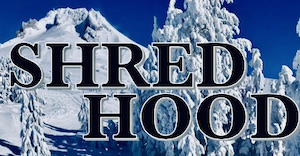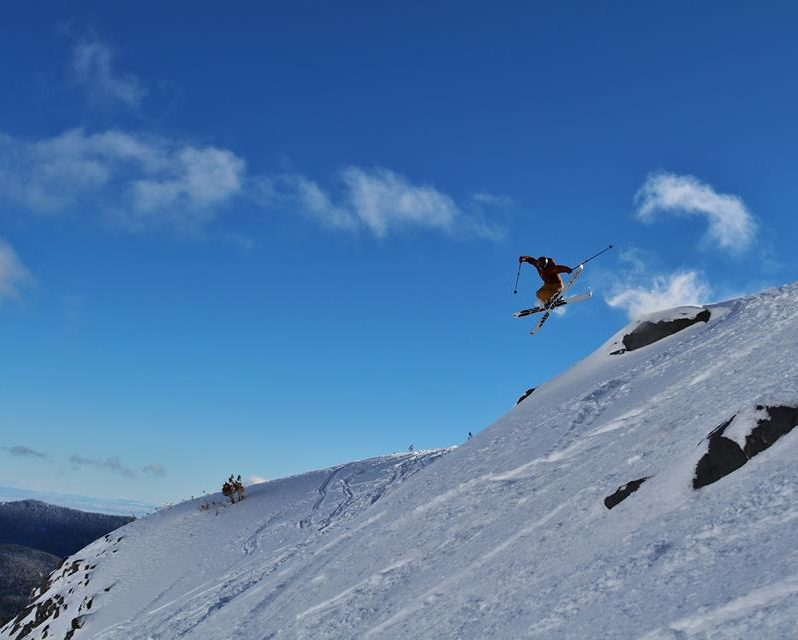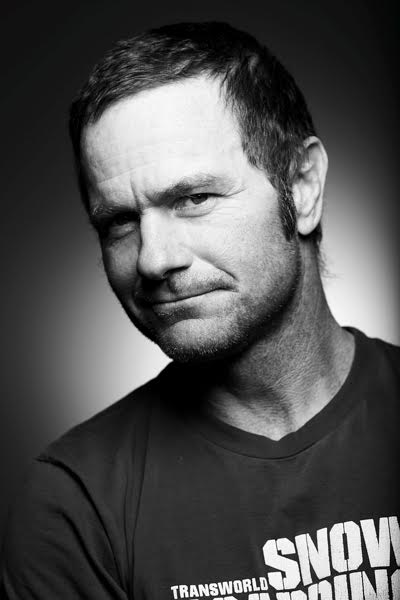If you are a regular at Mt. Hood Meadows, maybe you know Wilson Brown. With his super-long dreads and big-air launches, Wilson is a well-known character in the parks and at the Mazot. He’s one of those flexible-knee, low-fear dudes who likes to head out into remote areas on powder days, drop off cliffs and stomp the landing. The last thing he wants is to land on somebody.
That’s why Wilson recently wrote the following letter to Mt. Hood Meadows:
Dear Mt. Hood Meadows Ski Resort,
After riding at Mt. Hood Meadows for over a decade I have come to a seriously concerning realization over the Christmas holidays. While I am a HUGE supporter of new riders–children and adults alike–learning to ski and snowboard on Mt. Hood, their apparent lack of education in terms of where to ride given ability and conditions has led me to numerous close calls this 2015/2016 season. As a skier who consistently uses natural features on MHM’s double-black terrain to do many of the tricks that often get my pictures on Mt. Hood Meadows’ website and brochures, I have almost hit multiple riders because they are lost, stuck, or somewhere they should not be in the first place.
As freestyle skiers and snowboarders, we make sure to spot each line, check that the landing zone is clear, and that no other guests are in the area. Given the extreme steepness of some technical terrain it is possible for someone to mosey underneath such features, and they can easily find themselves in your landing zone. Last Saturday, for example, I spotted my landing and, after hiking back to the drop-in zone, a guest decided it was a good idea to traverse underneath the rock ledge and loiter. Because he was in a blind spot, to avoid a collision I put myself in harms way, and bailed mid air to an extremely painful fall. This type of guest ignorance is especially applicable to MHM’s advanced terrain parks–families with young children often ride along side the larger features, consistently putting themselves in blind spots and landing zones that are impossible to check before the drop in because they are often lingering, giving the appearance that a jump is clear when it is not; in order to hit these feature riders need to go at least thirty miles an hour, and it is impossible to change trajectory once you leave a feature and become airborne.
The safety of everyone at Meadows, including myself, is a hallmark priority for me when skiing. Despite years of experience, and checking each feature and landing before hitting it, I continue to find guests in the wrong place at the wrong time. I am scared and concerned that without better guest education, as more and more people continue to visit Mt. Hood, this problem will continue, with potentially disastrous consequences. As Mt. Hood Meadows Ski Resort’s company policy and mission statement center around guest safety, I would like to see measures taken that enable advanced riders to safely develop their skills, while at the same time keeping less experienced guests out of harm’s way.
Improved guest education and enforcing the “ride only to your ability” policy could help solve this dilemma. One possible implementation of such a safety law would be, for example, to restrict anyone from the advanced terrain park that is not able and willing to hit the features–families should be TOLD they are not able to enter the gates to spectate. In terms of Heather Canyon and the like, I believe a new system of education is necessary to teach those who choose to ride beyond their ability not only of the potential consequences of the natural terrain, but also awareness of other potential skiers that are utilizing the most technical parts of the resort. As a participant and spectator of freestyle riding, I have seen most advanced riders do an outstanding job on their part to live up to Mt. Hood Meadows’ safety standards, but without a more informed public I fear that I will continue to have close calls with unaware riders who place themselves on runs beyond their ability.
Safe drivers make safer roads; no matter how experienced you are at driving, there is always the constant threat of an accident based on road conditions and other drivers. Unlike the highways, you don’t often see cars jumping off cliffs onto cars that decide to park under neath them.
Sincerely,
A concerned patron and longtime supporter of Mt. Hood Meadows.
Wilson’s letter is worth reading because it identifies a potential flaw with the black-and-white rule that the uphill skier or snowboarder is always at fault when collisions happen. That rule definitely applies in green-circle and blue-square terrain, and arguably it works on black-diamond trails too. But double-black diamonds? Should there be different standards in large terrain parks and super-steep trails such as God’s Wall, the S & R Cliffs and Skibowl’s Outback? Given the added risk of radical terrain?
‘I’m coming through the air, and there’s someone’s head below my feet.’
I caught up with Wilson the other day at the Mazot, and we had an interesting conversation on the subject. It turns out that we are both applying to the same MBA program, so we had plenty to talk about. I’ll edit our conversation for brevity and relevance:
Shred Hood (SH): What was the impetus for writing this letter? Your crash?
Wilson Brown (WB): I’ve crashed like hundreds of times here because of this problem. The thing I’m worried about is, I really don’t want to hurt anyone. I accept the risk of getting hurt. That’s part of the game. But hurting someone else is what makes me nervous.
SH: You’re talking about advanced terrain only, right?
WB: Yeah, double black diamonds and terrain parks only. Anywhere else on the mountain, fine, just don’t hot-dog it down a blue run. But when you are on really advanced terrain and trying to utilize it, there needs to be some sort of guest awareness about riders who are doing that, and how it takes both parties to prevent it.
SH: Give me an example of a line where this can be a problem.
WB: A great example is Rock Garden. A lot of people love to go down there first thing in the morning for fresh tracks. Not many people want to send it off the top of the rock, but a lot of people start off on that traverse and they sweep right underneath the rock. And it’s hard because there’s multiple entry points form the top of the tree line. So even if I was to go to the top of Rock Garden and look down at it, by the time it takes me to sidestep up 40 feet, a lot of times people will drop in and hang out right underneath the rock. I just don’t know they’re there, and it brings me in at head level, that’s the problem. I’m coming through the air, and there’s someone’s head below my feet. And that’s when I bailed. I saw a helmet and brought my ski up to the side so it wouldn’t hit him in the head, and I was flying sideways through the air. In the end it was just like getting hit by a football player. It’s part of the game. But I’m terrified that someone could get hurt.
SH: Do you see a lot of people on trails where they don’t belong?
WB: Oh yeah. These trails are marked blue, black or double-black for a reason, but a lot of people don’t pay attention. There’s an open-gate policy. And this isn’t just Meadows. It’s industry-wide. I see people make dangerous decisions, and no one tells them differently. I see families go through terrain parks all the time when really they shouldn’t be in there with people going fast but no one is going to tell them not to.
SH: Large terrain parks?
WB: Oh yeah, the huge ones with the 60-foot table-tops. They’ll go up to the top and look around and then they’ll go down the side and zigzag around, and it takes them a while on the downward slope. So I can look and the park can be dead-empty. And I’m like, one, two, three, okay, all the jumps are clear. And I’m booking it, and all of a sudden there’s a little kid down there on the side and his mom’s right there, and you’re in the air.
Photo by Sean Jacks
SH: What could be done about this?
WB: Park crew should be out there mitigating it, limiting who goes into the parks. Same with Heather Canyon: There should be a clear message, do not come through here alone if you have never been through before. I just feel like people should know the consequences on advanced terrain before they head into it.
It seems to me that Wilson is raising some good points. What do you think? Should Meadows and other ski resorts be more vigilant about controlling who enters large parks and high-consequence gated terrain? Or is it fair to place the burden of responsibility on the uphill skier in all cases?
One last photo, from a place of refuge during the latest powder storm on Mount Hood. Wilson is second from the left, with Brian Ellsworth, Jason Murray and Grant Myrdal (L-R):
Last modified: February 4, 2016



